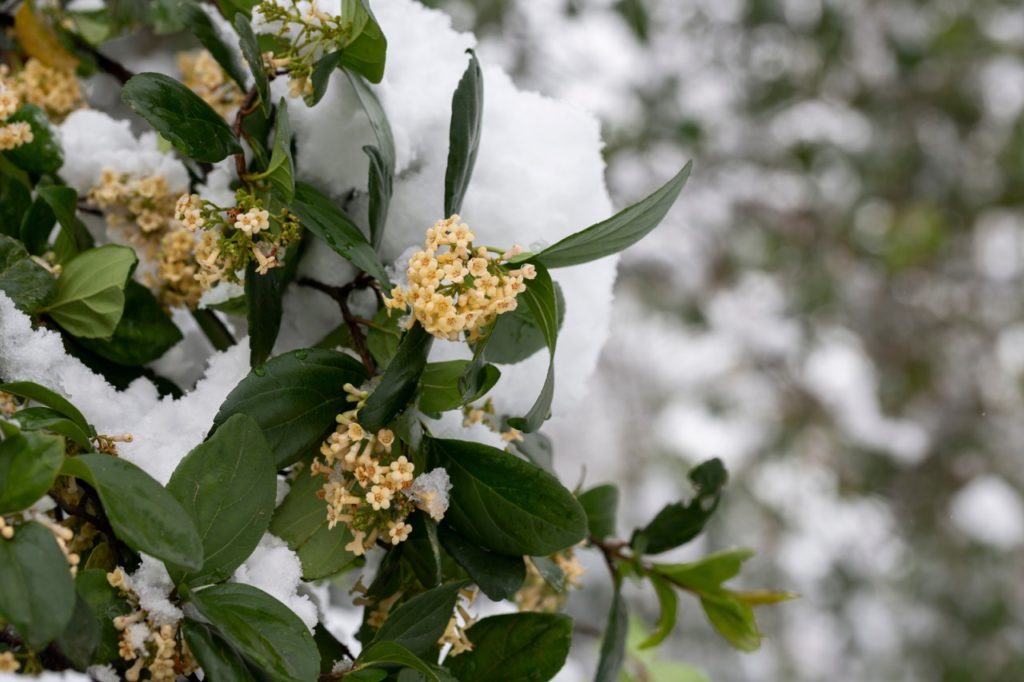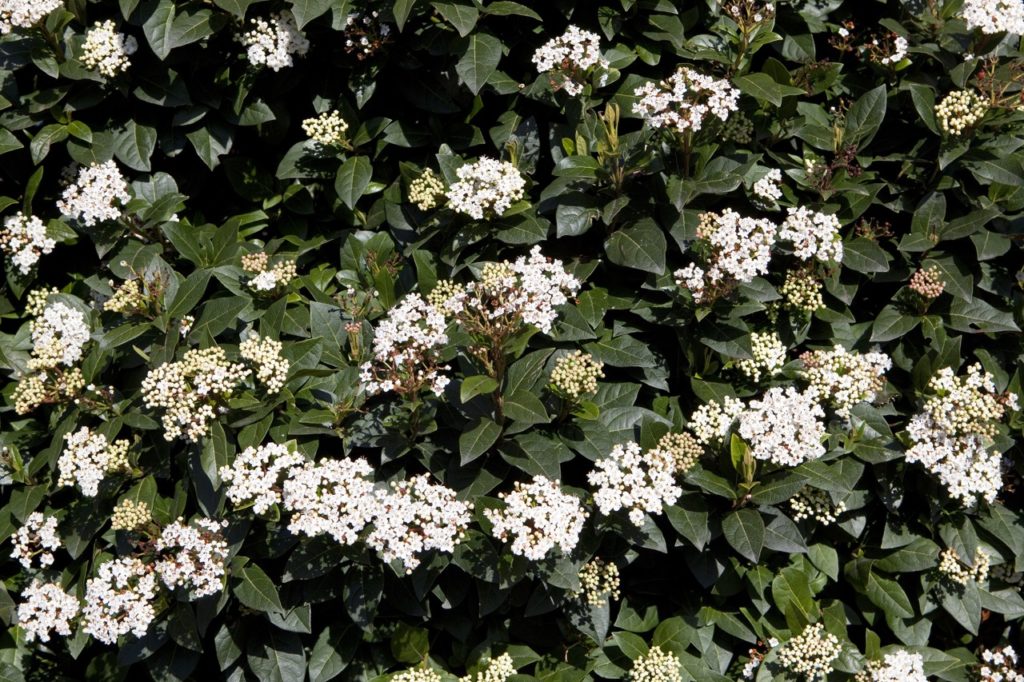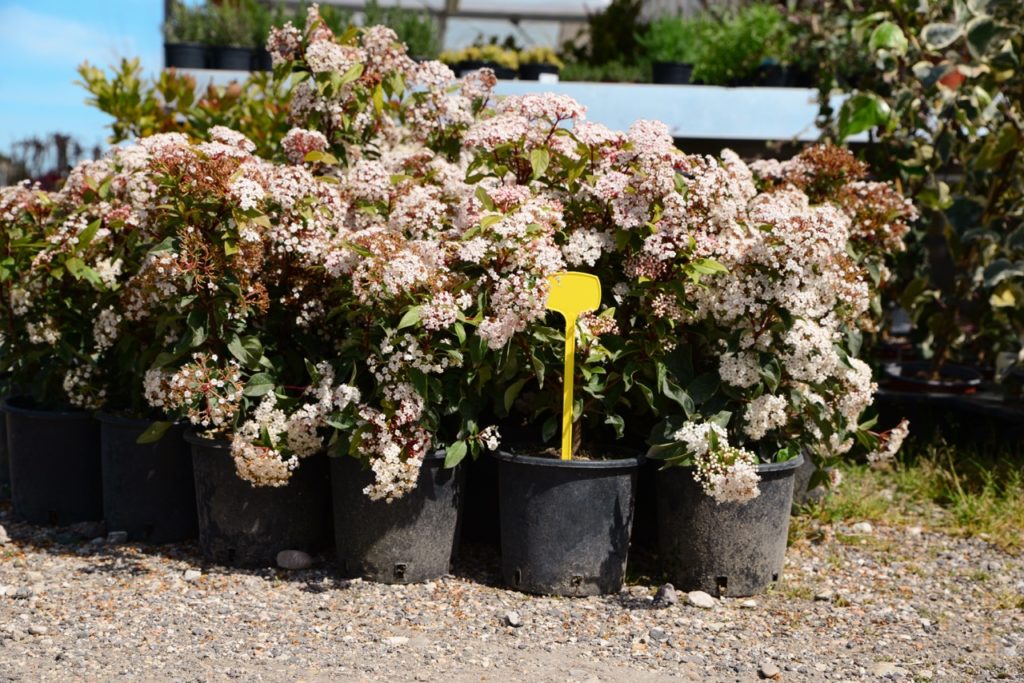SHRUBS > VIBURNUM > TINUS
IN THIS templet
VIBURNUM GUIDES

DavidiiPruningRoseumTinusWinter Flowering
There ’s nothing like a prissy shrub to add depth and a splash of colour to your boundaries and borders , and theViburnum tinusshrub is a utter nominee for this .
The rich profundity of its unripe leaves is captivating , and the dazzling clean - pink flowered heyday from late wintertime through to former saltation is a large forerunner to the other flowers in your garden .

This template include advice from the Co - Owner of Classic Viburnums , Gary Ladman .
Overview
PreferredFull Sun or Partial Shade
ExposureSheltered
HeightUp to 4 M

SpreadUp to 4 M
Bloom TimeWinter and Spring
PreferredMost prolific grunge

MoistureMoist but well - drain
pHAny
While native to the Mediterranean , this flora has found itself nicely in the UK .

genus Viburnum tinusgoes by several names based on the root word Laurus , advert to its law of similarity tothe bay laurel plant life .
How To Grow Laurustinus
You ’re best off planting out your Laurustinus in autumn to give it the best hazard at taking hold before the rough conditions set in .
Planting out in spring works too , but only for plant life already established in containers .
Viburnum tinusis quite adaptable , meaning it ’s beseem to a mixed bag of weather .

“ The dappled shade of gravid Sir Herbert Beerbohm Tree and shrubs is perfect forViburnum tinus , providing specter from intense summertime sun and some aegis from cold wind , ” says Colin Skelly , a Master Horticulturist .
“ A perfect familiar for leaping bulbs . ”
As a rule , you ’ll want to protect it from chilly tip in the insensate calendar month and hot cheer in the summertime .

Viburnum Tinus Care
Once your viburnum is in the priming coat , you ’ll need to take beneficial care of it to maximize the likelihood of a long and fruitful spirit .
As we ’ve mentioned , V. tinusis fittingly hardy for most British garden .
An RHS hardiness paygrade of H4 signifies a minimum temperature of between -5 to -10 ° C – anything below this and your plant may not survive .

Unless you live in the furthermost northern reaches of Scotland or there ’s a particularly punishing winter , you should be able to raise this plant with no issues .
The idealistic aspect for Laurustinus is anything but north - lining .
The plant revel shade or sun and you just need to protect it against the red-hot summer ray of light .
You ’ll also want to check that the industrial plant is well shelter , as cool flatus are n’t idealistic .
In terms of soil composition , this plant is n’t fussy and will tolerate most soils and pH stratum .
dirt moisture level are where you demand to be careful as viburnum likes moist but well - drained soil that is never dry but is also not prone to becoming waterlogged .
“ If you have a particular issue with wet soil , a method you could opt for is to coquette the root clump , ” says Gary .
“ With your spade or sharp knife , cut through the bottom half of the root ball entirely and spread it out horizontally in the planting hole which is now just half as deep as if you were implant the root word lump entire .
“ This keeps the beginning nigher to the aerofoil which is go to dry out quicker which prevents root bunkum .
“ I have planted in position where water would fill a planting hole as presently as the trap was travail .
“ Situations such as this require drastic criterion where you might have to pull up stakes the entire root ball above the priming coat and backfill with a mound of soil , step by step splatter away from the summit of the plant . ”
To ensure healthy growing , you ’ll desire totest the territory regularlyand repair any alimentary deficiencies .
It ’s recommended to do this every 2 - 3 geezerhood .
Using an evenly balanced fertiliser once a year will promote a vivacious flower and healthy foliage .
This plant has been placed into pruning group 8 by the Royal Horticultural Society , mean that it needs slight to no pruning once established.1Shrubs : pruning evergreen plant . ( n.d.-c ) . Royal Horticultural Society . Retrieved March 27 , 2023 , fromhttps://www.rhs.org.uk/plants/types/shrubs/evergreen-pruning-guide
If you do decide to prune to keep the flora at a manageable size , aim to do this before the grow time of year begins in mid - spring .
Prune after the last frost to reduce the endangerment of frost hurt .
This plant snuff it mold really well when planted withSnowdrops , Black Mondo andLady ’s Mantle .
you’re able to propagate this plantby taking cuttingsbetween 8 - 10 inches long that have multiple growth nodes .
Remove all the leaves , souse them in some urine and then add rooting hormone .
Common Problems
V. tinusis specially vulnerable to two specialiser pests , the viburnum whitefly and the viburnum beetle .
The larvae of this pest cause the first round of golf of damage , which is then amplified by the grownup beetles later on in the year .
Symptoms include holes in the leave-taking with the veins untouched and visible cream - coloured larvae from April or grey grownup beetles from July .
Removing glitch by hand is a unspoilt way to control infestations ab initio , although if they become heavily plant pesticide control may be necessary .
encourage wildlife may help keep them in check too , as bird and other bugs like these beetle as tasty snacks .
These sap - suckers are small flies with snowy offstage that live beneath leaves in the summer and stay present over winter .
Unless your viburnum has contraband sooty mould , whitefly may not need to be take away .
With this in mind , tolerate their presence or attack to encourage predatory wildlife before bet into pesticide solutions .